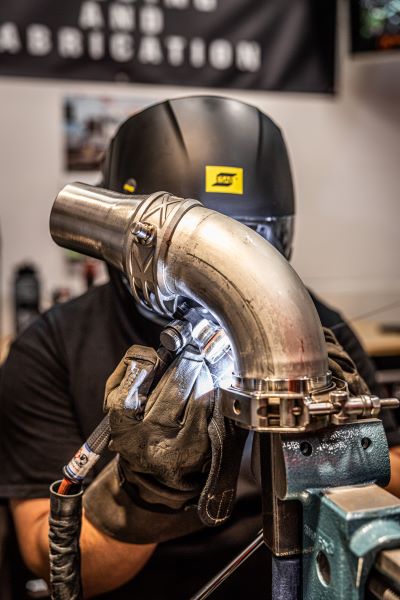A Safety Manager’s Guide to Welding
Welding is classified as a high-risk job by BLS, as exposures to numerous hazards remain present during welding and cutting tasks. If safety managers, site managers, and team supervisors are to keep welders and cutters safe, they need to understand all the risk exposures involved in the job and what protective measures and equipment can be taken.
Welding hazards
Work environments for welders and cutters can vary. Many work outdoors in all types of weather with exposure to fluctuating temperatures, wildlife, terrain, and other types of hazards. Indoor work environments can include confined spaces, exposure to moving equipment, and working from heights. All of these exposures are in addition to having to lift or move heavy objects and work in awkward body positions that create ergonomic concerns.
Common welding exposures include:
- Toxic and irritant fumes and gases
- Over-heated surfaces
- Intense light and radiation
- Excessive noise
- Fire/Explosion
- Lack of or displaced oxygen during welding tasks
- Stressed or awkward body positions
- Working from heights
- Climate, weather, and wildlife
- Underwater hazards (water pressure/depth, equipment failure)
Common welding injuries include:
- Thermal burns
- Electrical shock
- Electrocution (death)
- Welder’s flash
- Temporary blindness and cataracts
- Lower back strain
- Hearing loss
- Asphyxiation
- Headaches, high blood pressure, and heart conditions
- Targeted organ disease (kidneys, liver, pancreas)
- Falls from heights or work platforms
- Heat stress/illness
- Hypothermia/frostbite
- Animal bites/stings
- Decompression sickness/drowning
Keep in mind that this isn’t an all-inclusive list. There can be other highly situational risks depending on the task being performed and the working environment.
If welders and the people responsible for site safety don’t take the appropriate measures or wear the correct PPE for the task, they’re taking unacceptable risks that can impact the quality of life of the welder and their loved ones, as well as impact the safety and performance of the team at large.
So what measures can be taken to protect welders and cutters?
Preventive/protective measures for welders
As is the case for any type of work-related hazard, managers must conduct an effective risk assessment, followed by implementing the right corrective actions.
Once the risk assessment is complete and actions identified, welders need to be trained on those hazards and protective measures so they are clear on what the exposures are associated with the tasks.
Some engineering and administrative controls include:
Welding location and amount of time exposed
Where a welder works and how long they spend there can greatly impact their safety and well-being.
For example, plasma cutting is a process that generates high noise levels. If performed inside a shop environment, decibel levels can exceed 120 dBA. If that same task is moved outside onto an open area such as a tarmac (assuming it’s possible), noise levels can be reduced to below 105 dBA. Both instances require dual hearing protection. But, by changing from indoor to outdoor where the noise can dissipate, the welder significantly reduces the noise exposure.
If the task requires long exposure times, then welders can be rotated so that individuals aren’t exposed to the noise for the full amount of time. This option isn’t always available, but should be considered if there are enough welders/cutters on the team with the skills to perform that task.
Type of welding and selected rods or media
Choosing the type of welding may not always be an option, but when it is, a welder should opt to use a less hazardous type of welding that reduces the exposure to fumes, coatings, noise levels, and more.
Site ventilation/exhaust
Proper airflow and air exchange reduces exposure to fumes and gases. Ventilation is critical to safely working in a room or an enclosed area, and helps prevent respiratory irritation from inhaling toxic fumes.
Also consider where these fumes and gases are actually going. Don’t blow fumes or gases into other active work areas, as that only shifts the hazard to a different place and endangers other workers.
Removal of flammable/combustible materials
Hot work permits will be needed when welding outside of a designated hot work zone. This means that the welder has to visually inspect the area for flammable or combustible materials that could be ignited during the welding cutting process and remove them. If the flammable materials can’t be removed, they should be covered with a fire-retardant blanket.
Equip the appropriate PPE
All welders and cutters must be equipped with the following personal protective equipment:
- Hearing protection. Protects from excess noise and keep popping slag out of ear canals. Consider dual protection with ear plugs and muffs that can handle sound levels over 100 dBA (OSHA) or 105 dBA (MSHA).
- Respirator. PAPR, face piece with cartridges, N95 disposable—choose based on risk assessment findings. This requires following OSHA’s Respiratory Protection standard, 1910.134.
- Welding gloves. Protects fingers/hands/wrists from thermal and radiation burns.
- Fire-retardant and/or non-conductive sleeves and apparel. Reduces exposure to thermal burns.
- Eye protection. Safety glasses under a filtered lens hood or using filtered lens goggles.
- Hard hat. If there is danger of falling objects onto the welder.
- Fire-retardant head/neck covering. Prevents sparks and slag from causing burns.
PPE has to be worn properly at all times while performing the task, and whenever it is reasonable to do so. Many task-related injuries are a result of the welder being complacent and taking off or not wearing their PPE.
How Mechanix Wear can help
As a PPE manufacturer, Mechanix Wear has trained safety professionals, materials scientists, and industry experts on-hand to help develop PPE that protects welders from the identified hazards. Check out the welding PPE we have available.
If you sign up for our exclusive TRACK Program, our safety experts will work with you and provide risk assessments, safety solutions, and no-cost trials of the proper PPE with front-line employees (welders) so they can see, touch, and experience those solutions first-hand before purchasing.